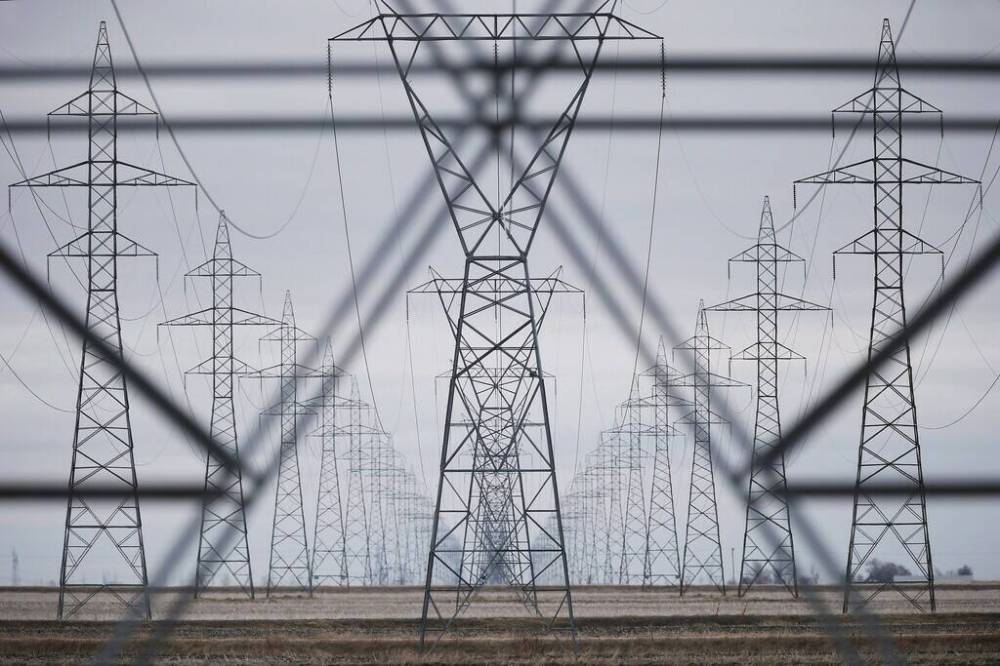Manitoba Hydro — the forecast isn’t good
Advertisement
Read this article for free:
or
Already have an account? Log in here »
To continue reading, please subscribe:
Monthly Digital Subscription
$0 for the first 4 weeks*
- Enjoy unlimited reading on winnipegfreepress.com
- Read the E-Edition, our digital replica newspaper
- Access News Break, our award-winning app
- Play interactive puzzles
*No charge for 4 weeks then price increases to the regular rate of $19.00 plus GST every four weeks. Offer available to new and qualified returning subscribers only. Cancel any time.
Monthly Digital Subscription
$4.75/week*
- Enjoy unlimited reading on winnipegfreepress.com
- Read the E-Edition, our digital replica newspaper
- Access News Break, our award-winning app
- Play interactive puzzles
*Billed as $19 plus GST every four weeks. Cancel any time.
To continue reading, please subscribe:
Add Free Press access to your Brandon Sun subscription for only an additional
$1 for the first 4 weeks*
*Your next subscription payment will increase by $1.00 and you will be charged $16.99 plus GST for four weeks. After four weeks, your payment will increase to $23.99 plus GST every four weeks.
Read unlimited articles for free today:
or
Already have an account? Log in here »
It’s a collection of words in a Free Press story that should strike fear into the hearts of any Manitoba Hydro customer: “Hydro has estimated the project will cost at least $7 billion, although because it is still at a very early stage, officials at the utility concede the final price tag will be higher.”
Now, there’s no doubt that the $7-billion project has to go ahead — the work, to be done on the Bipole I and Bipole II converter stations, is long overdue, and delaying the work still further raises the risk of power failures on the two lines that bring power south from northern generating stations.
But the fear part is because the $7 billion will come out of ratepayers’ pockets as part of 15 years of rate hikes, and if there’s one thing Manitoba Hydro has proven over its recent history, it’s had issues successfully budgeting for megaprojects.

File
Manitoba Hydro power lines.
A few cases in point? The Bipole III transmission line, originally projected to cost $2.2 billion, wound up at $5.04 billion. The Keeyask generating station, originally forecast at $6.5 billion, ended up costing $8.7 billion.
Manitoba Hydro is far from alone — megaprojects for other public utilities, let alone for municipal, provincial and federal governments, have a long history of costing far more than their original estimates.
But we’ve got to pay for it.
A look at Manitoba Hydro’s long-term debt management strategy suggests that, even if everything the utility has planned comes in on budget, we’re in for a steady increase in power bills (provided that the province’s Public Utility Board agrees over successive rate increase applications and allows Hydro to increase its rates the way the utility feels is necessary).
Hydro’s debt management strategy, included in its current rate application with the PUB, lays out how it sees the future unfolding: “This debt management strategy is based on the 20-year financial forecast which assumes stable and predictable 3.5 per cent annual rate increases in each fiscal year until 2040/41 and 2.0 per cent thereafter.” Those rate increases take into account the $7-billion Bipole I and II refurbishments, but not any cost overruns.
Now, 15 years may feel like a long, long way away. But the annual rate increases Hydro’s pitching as needed to “maintain financial resilience and gradually improve financial health over time” add up to a remarkable total — in all, a 67.53 per cent increase in electrical prices by fiscal 2040/41.
The other issue? The electrical industry is changing — rapidly. New sources of power are moving away from large hydro projects at long distances from markets to newer models.
And the climate isn’t helping, either.
A low water year last year severely curtailed Hydro’s ability to make its expected returns on power exports, “Since the last electric general rate application, drought and low water have resulted in lower net income than anticipated and the previously planned debt retirement did not materialize,” the latest rate application says.
The current water forecast is blunt for this year: a July 9 report on the current status of water levels says, “The watersheds that contribute to our hydroelectric generating system are experiencing abnormally dry to extreme drought conditions. Despite recent rains, overall inflows continue to be well below average.”
Virtually every water level the utility measures is below last year’s level — and water flows in the province’s river systems are currently half to three-quarters less than they were in last year’s low water conditions.
But the fixed costs of projects like the revamping of Bipole I and II won’t be shrinking.
The confluence of events is remarkable — and more than a little grim.
And the consumer will be the one left between a rock and a hard place.



